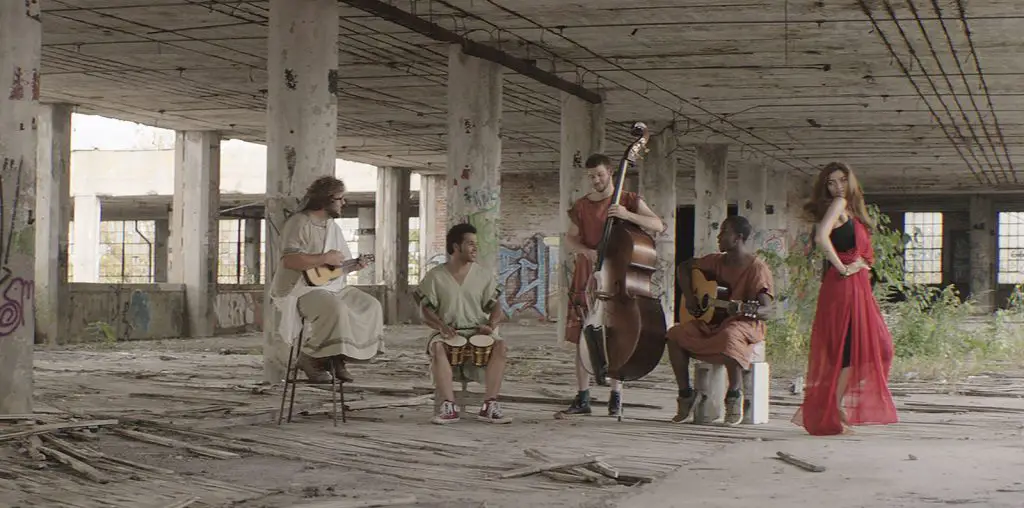
“Between Resistance & Community: The Long Island Do-it-Yourself Punk Scene” is a fine little documentary on the alternative universe of punk rock bands who perform in the basements of private homes and in the twilight-time parking lots in suburban New York. This is not just a local scene, but one with national ties as bands from the around the country pass through to play for audiences that barely seem larger in size than two dozen.
Whether the bands presented here have more enthusiasm than talent depends on your opinion of punk rock. That the filmmakers needed to add subtitles for audiences to understand what was being performed could be considered an act of mercy. In any event, this DIY universe has its supporters, and at least one of the bands presented here (On the Might of Princes) is good enough to get the offer of a contract from an indie label (much to the grumbling of other punk bands who consider them as sell-outs).
As a music documentary, the film hits frequent bullseyes in capturing the extraordinary rapport between the frenzied performers and their adoring fans…especially when they are playing in basements where everyone is literally face-to-face. In one hilarious moment, the scene gets so frenzied that one punk lover (who bears a startling resemblance to Curly from the Three Stooges) gets raised on the shoulders of the audience and is bounced along to the beat of the music.
Less amusing, though, is a video taken by one Long Island punk rocker who was on tour in Wisconsin and whose basement show was broken up by the local police. When one bastard cop failed to get the rocker to turn off his video camera, he took the musician and crashed his head into the floor, resulting in a gash requiring 14 stitches to close. (Moral of the story: not everyone in a uniform is a hero.)
All told, the punk rockers in the film are anything but punks. Despite some curious haircuts and extensively tattooed flesh, they all come across as sincere and articulate, offering erudite explanations on the appeal of this DIY landscape as well as its demographic limits (this is overwhelmingly a white male bastion). Less successful, however, are their explanations and attempts to use this punk scene and its inhabitants as rebels against the smug mainstream culture. The fact that the young people of this film come from comfortable middle class homes and show no signs of suffering for growing up in suburbia is never explored, and their cry against the establishment is not well-served when an example of their rebellion includes a brief segment on midnight games of kickball in a mall parking lot. In raging against what the film’s press kit defines as “the dominant consumerist society,” these punk rockers stay firmly rooted in their suburban safety…and, perhaps, their own hypocrisy.
